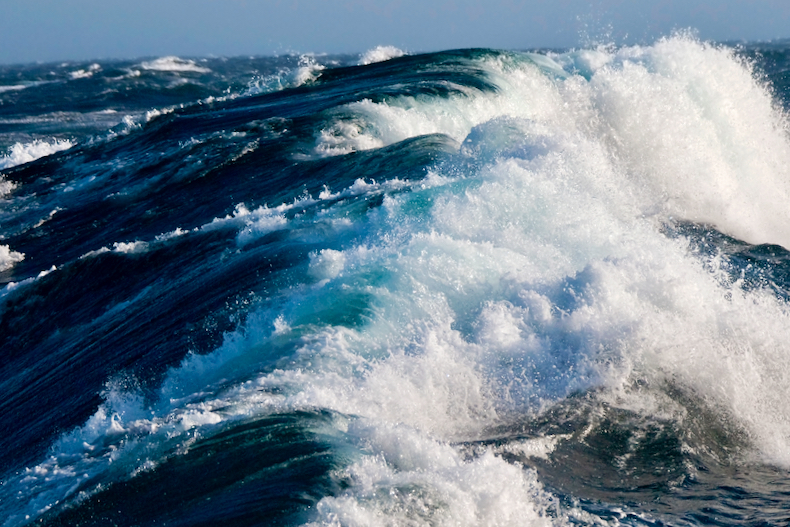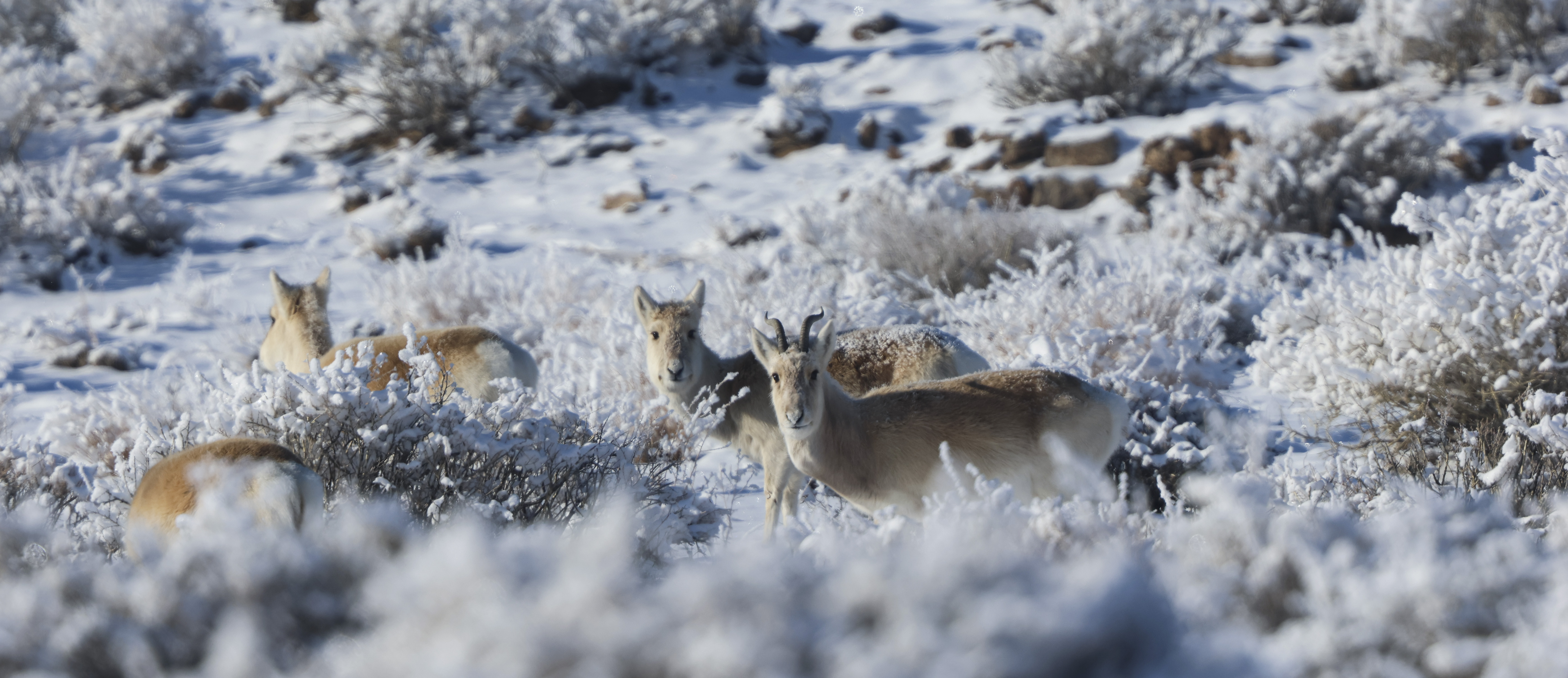Susan Anenberg, Director of the GW Climate & Health Institute, and associate professor of environmental and occupational health. Anenberg’s research focuses on the health implications of air pollution and climate change. Recently her team published two studies finding links between…
Tag: Climate Change
Five facilities at Argonne where climate solutions are front and center
Learn more about five research centers at Argonne National Laboratory that help researchers bring climate science from the lab to the world.
Wilkes Center at University of Utah announces 7 finalists for the $500,000 Climate Solutions Launch Prize
The Wilkes Climate Launch Prize is one of the largest university-affiliate climate awards in the world and is geared to spur innovation and breakthroughs. The prize is specifically calibrated to support unconventional or first-of-a-kind projects that often have difficulty getting funding.
Tropical fish are invading Australian ocean water
A University of Adelaide study of shallow-water fish communities on rocky reefs in south-eastern Australia has found climate change is helping tropical fish species invade temperate Australian waters.
Penn Medicine marks Earth Day by signing national Health Sector Climate Pledge
In a public commitment to become the most environmentally friendly health care organization in the nation and lead the industry to reduce its outsized impact on climate change, Penn Medicine has signed the ambitious Health Sector Climate Pledge, promising to significantly cut and, eventually, eliminate its carbon emissions by 2042.

Composer Etienne Charles’s Ambitious “Earth Tones” Takes On Climate Change
Jazz composer and University of Miami Frost School of Music professor Etienne Charles’s latest music and multimedia project, “Earth Tones,” portrays the dire effects of climate change, from tropical islands to the Louisiana Bayou, and some inspiring solutions.

Warming of Antarctic deep-sea waters contribute to sea level rise in North Atlantic, study finds
A new study published in the journal Nature Geoscience led by scientists at University of Miami Rosenstiel School of Marine, Atmospheric, and Earth Science, and the National Oceanic and Atmospheric Administration’s Atlantic Oceanographic and Meteorological Laboratory, found that human-induced environmental changes around Antarctica…
What drives a warming tundra to release carbon into the atmosphere?
Increased warming in tundra ecosystems is resulting the release of carbon into the atmosphere through ecosystem respiration, contributing additionally to climate change. A recent meta-analysis published Nature revealed factors that contribute to ecosystem respiration, including soil nitrogen concentration, pH and ratio of carbon to nitrogen.
Ice age climate analysis reduces worst-case warming expected from rising CO2
A detailed reconstruction of climate during the most recent ice age, when a large swath of North America was covered in ice, provides information on the relationship between CO2 and global temperature. Results show that while most future warming estimates remain unchanged, the absolute worst-case scenario is unlikely.
Mountain chickadees have remarkable memories. A new study explains why
Mountain chickadees have among the best spatial memory in the animal kingdom. New research identifies the genes at play and offers insight into how a shifting climate may impact the evolution of this unique skill.
Marine plankton behaviour could predict future marine extinctions, study finds
Marine communities migrated to Antarctica during the Earth’s warmest period in 66 million years long before a mass-extinction event.
Climate Resilience Symposium to take place during Miami Climate Week, hosted by University of Miami Climate Resilience Academy
The University of Miami’s Climate Resilience Academy will host its third symposium, “Resilience in the Built and Natural Environments,” on Wednesday, April 24 to delve into the ways that municipalities across the globe can and are adapting to a warming planet.
Florida Climate Report: Expert Panel Live Event Reporter Q&A
Climate experts from Florida Atlantic University, Archbold Biological Station, and Live Wildly Foundation will speak and answer questions from the media on the Florida Wildlife Corridor (FLWC) and Climate Change managing Florida’s Natural and Human Landscapes for Prosperity and Resilience
UC Irvine researchers shine light on rapid changes in Arctic and boreal ecosystems
Irvine, Calif., April 16, 2024 — Arctic and boreal latitudes are warming faster than any other region on Earth. In three new studies, Earth system scientists at the University of California, Irvine report how the ecosystems in these regions are changing. In a study published in Global Change Biology, a team led by Earth system science Ph.
Florida Wildlife Corridor Eases Worst Impacts of Climate Change
Florida is projected to lose 3.5 million acres of land to development by 2070. A new study highlights how Florida can buffer itself against both climate change and population pressures by conserving the remaining 8 million acres of “opportunity areas” within the Florida Wildlife Corridor (FLWC), the only designated statewide corridor in the U.S.
Chemicals in stalagmites unlock secrets of ancient fires
New research shows chemicals in stalagmites could hold the key to understanding fire activity from thousands of years ago.
AI is giving boost to crop improvement research
AI provides a new lens to bridge science and practice in crop breeding research, said Iowa State University agronomy professor Jianming Yu, one of the world’s top-ranked scientists in the fields of quantitative genetics and plant breeding.
New report ‘braids’ Indigenous and Western knowledge for forest adaptation strategies against climate change
Severe droughts and wildfires, invasive species, and large insect outbreaks are straining national forests and surrounding lands. A new report outlines a new approach to forest stewardship that “braids together” Indigenous knowledge and Western science to conserve and restore more resilient forestlands in the U.S.
Remote work cuts car travel and emissions, but hurts public transit ridership
Remote work could cut hundreds of millions of tons of carbon emissions from car travel – but at the cost of billions lost in public transit revenues, according to a new study.

Mongolia’s Dzud Is a Severe Winter Weather Disaster Affecting People and Wildlife
As highlighted by both national and international media, a severe winter weather disaster—the phenomenon known as a ‘dzud’—during the 2023-2024 winter has presented unprecedented challenges for the people of Mongolia.
Heat stress from ocean warming harms octopus vision
While climate change has led to an increase in the abundance of octopuses, heat stress from projected ocean warming could impair their vision and impact the survivability of the species.
Steps to Combat Climate Change with 20 Billion Investment from the Emergency Protection Agency
Susan Anenberg, director of the GW Climate & Health Institute, and associate professor of environmental and occupational health at the GW Milken Institute School of Public Health. Anenberg’s research focuses on the health implications of air pollution and climate change.…
Climate change impacts terrorist activity
Changing weather patterns induced by climate change are contributing to shifts in the location of terrorist activity, according to new research.
Africa is no longer the carbon sink of the world
In only nine years between 2010 and 2019, Africa has turned from being a net carbon sink, to being a net carbon source.
SUNY ESF Leads Groundbreaking Research in Groundwater’s Role in Ecosystem Sustainability
Groundwater has been largely unstudied in its importance and role in sustaining ecosystems.
New satellite dataset sheds light on Earth’s plant growth
In the field of environmental and climate science, researchers have developed the Comprehensive Mechanistic Light Response (CMLR) gross primary production (GPP) dataset.
Going ‘Back to the Future’ to Forecast the Fate of a Dead Florida Coral Reef
How coral populations expand into new areas and sustain themselves over time is limited by the scope of modern observations. Going back thousands of years, a study provides geological insights into coral range expansions by reconstructing the composition of a Late Holocene-aged subfossil coral death assemblage in S.E. Florida and comparing it to modern reefs throughout the region.
Twist of groundwater contaminants
The Korea Institute of Science and Technology (KIST) announced that a team of Dr. Seunghak Lee, Jaeshik Chung, and Sang Hyun Kim from the Water Resources Cycle Research Center has discovered that the natural purification of groundwater is enhanced by nitrate, a known pollutant.
ORNL, University of Kentucky focus on clean energy in Appalachia
The Department of Energy’s Oak Ridge National Laboratory hosted the second annual Appalachian Carbon Forum in Lexington March 7-8, 2024, where ORNL and University of Kentucky’s Center for Applied Energy Research scientists led discussions with representatives from industry, government and academia to discuss ways to transition to clean energy.
How much difference can one degree of warming make?
The findings, which challenge existing climate models, underscore the need to refine predictions and understand the cascading effects on ecosystems, including our own in northern Arizona.
Tulane researcher available to talk about the climate-saving power of mangrove forests
Tulane University researcher Daniel Friess and his team work to unveil the critical role that mangrove forests play in the fight against climate change. Mangroves are shrubs or trees that grow mainly in coastal saline or brackish water. Mangroves have…
Michigan Ross Professor Investigates the Impact of Local Climate Change Beliefs and Policy
In two newly published papers, Tom Lyon, professor of business economics and public policy, explores the effect of sentiment and policy on greenhouse gas emissions.
Sea Surface Temperature Research Provides Clear Evidence of Human-Caused Climate Change
New oceanic research provides clear evidence of a human “fingerprint” on climate change and shows that specific signals from human activities have altered the seasonal cycle amplitude of sea surface temperatures (SST).
New composite decking could reduce global warming effects of building materials
Building materials are major contributors to global carbon dioxide emissions. So scientists have designed a composite decking material that stores more carbon dioxide than is required to manufacture it, providing the first “carbon-negative” option. They will present their results at ACS Spring 2024.
Tropical Plants Beat Drought by Interacting with Specific Microbes
Researchers from the University of Arizona and the Environmental Molecular Sciences Laboratory, a Department of Energy user facility, discovered that that plants can maintain specific microbe partnerships during times of drought, revealing a new level of resilience.
Revealing Nature’s Secrets from Space: Satellite Data Unlocks Drought’s Impact on Southwest China’s Carbon Cycle
A new study reveals a significant increase in aboveground carbon (AGC) in Southwest China from 2013 to 2021, defying the adverse effects of extreme droughts. This achievement underscores the region’s pivotal role as a carbon sink, attributed to extensive ecological projects and innovative remote sensing techniques.
Sasin BRIDGES Nobel Laureate Talk: A Financial Approach to Climate Risk
Professor Robert F. Engle III, Nobel Laureate in Economics and Michael Armellino Professor of Management and Finance at New York University Stern School of Business, recently delivered a provocative talk at Sasin titled “A Financial Approach to Climate Risk: Portfolios, Greenwashing, Stress Testing, and Long Run Risk,” on February 27, 2024.
Drought, Soil Desiccation Cracking, and Carbon Dioxide Emissions: An Overlooked Feedback Loop Exacerbating Climate Change
Soil stores 80 percent of carbon on earth, yet with increasing cycles of drought, that crucial reservoir is cracking and breaking down, releasing even more greenhouse gases creating an amplified feedback loop that could accelerate climate change.
Tsetse fly fertility damaged after just one heatwave, study finds
The fertility of both female and male tsetse flies is affected by a single burst of hot weather, researchers at the University of Bristol and Stellenbosch University in South Africa have found.
Wind Power Surge: China’s Bold Leap Towards a Green Future
A recent study introduces a novel methodology for evaluating the economic viability and competitive edge of onshore wind energy against traditional power sources. This approach underscores the potential of wind power to reach grid parity, where its cost becomes comparable or lower than conventional electricity sources. The research marks a significant step in understanding the dynamics of renewable energy markets and highlights the role of wind power in China’s ambitious environmental goals.
Revolutionizing Urban Landscapes: The Eco-Metropolis Model
In a revolutionary stride toward sustainable urban development, researchers have introduced the eco-metropolis model. This innovative approach seamlessly integrates ecological conservation with urban agglomeration, promising a future where cities thrive in harmony with nature.
Scientists explained what defines the leaves type and that in 100 years a third of the world’s forests will change
An international collaboration of scientists with the participation of an ecologist from RUDN University conducted the first global analysis of leaf type. In addition, the authors described the current state of forests and said what will happen to them by the end of the century due to climate change.
Humans have driven the Earth’s freshwater cycle out of its stable state
New analysis shows that the global freshwater cycle has shifted far beyond pre-industrial conditions

Study uncovers the influence of the livestock industry on climate policy through university partnerships
A new study co-authored by University of Miami professor uncovers how agriculture companies have downplayed their role in climate change.
Extreme Weather Events Tied to Increased Mortality and Emergency Department Activity
Mass General Brigham study reveals that ED visits and death are heightened weeks after major climate-driven extreme weather events – highlighting the long-lasting impacts these events may have on health and infrastructure
New discovery suggests significant glacial retreat in West Antarctica began in 1940s
Among the vast expanse of Antarctica lies the Thwaites Glacier, the world’s widest glacier measuring about 80 miles on the western edge of the continent.
Air Pollution Hides Increases in Rainfall
In a new study, researchers broke down how human-induced greenhouse gas and aerosol emissions influence rainfall in the United States.
Even very low levels of pesticide exposure can affect fish for generations, study finds
Fish exposed to some pesticides at extremely low concentrations for a brief period of time can demonstrate lasting behavioral changes, with the impact extending to offspring that were never exposed firsthand, a recent study found.
First certified carbon-negative beef production opens doors to emerging agricultural technologies, says Notre Dame expert
Argentina, one of the premier beef producers in the world, has set a precedent for livestock farmers by certifying the first carbon-negative beef — opening the doors for a number of emerging technologies that have the potential to reduce methane emissions from…
Advanced artificial photosynthesis catalyst uses CO2 more efficiently to create biodegradable plastics
An innovative and more efficient way to produce fumaric acid that not only reduces carbon dioxide emissions, but also reuses waste resources to make biodegradable plastics.